- Joined
- Jun 26, 2013
- Messages
- 191
Hi All - question for you...
I have piece of O1 drill rod that I need to cut an MT3 "socket" into. I have a set of roughing and finishing MT3 reamers (cheap set from ebay):
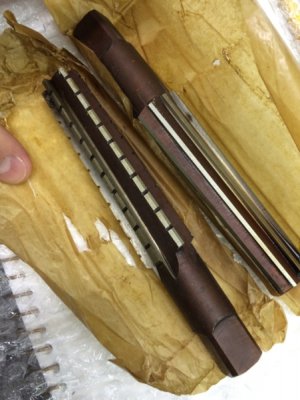
The drill rod is basically 1.5"diameter 4 inches long. I need the MT3 socket on-center - here is a rough sketch of what I'm trying to do:
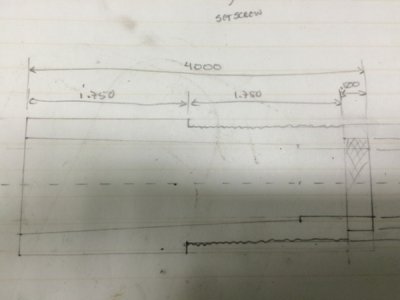
So... how should I go about prepping the part for using the reamers on it?
I'm thinking mount it in a 4-jaw chuck on my lathe (G0602), indicate the rod to be sure it's centered up good. Center-drill, then step drill up to approx 3/4" drill, then bore out to about .800, then start with the roughing reamer, finish with finish reamer... The small-end of the reamers is just under .800 dia, the large end is about .950. Would that be asking too much of the roughing reamer?
The only other option I can see would be to approximate the MT3 taper (undersized obviously) using a boring bar and the compound. I don't think I have 4" of travel on my compound though, but since it doesn't need to be perfect I may be able to do it in two passes? This would seem to require less metal removal by the roughing reamer - but I'm concerned it may also not allow the reamer to "find its center" as well and maybe I'll end up with socket that isn't straight and centered in my part?
Looking for suggestions - thanks in advance!
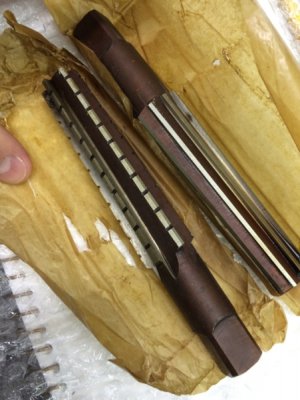
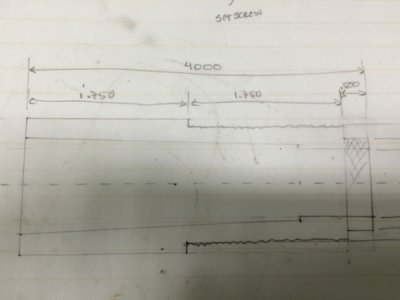
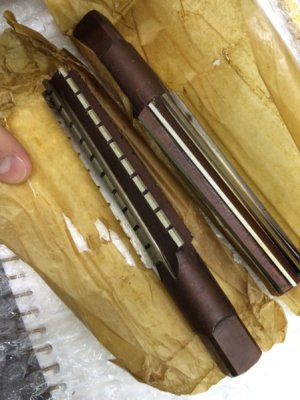
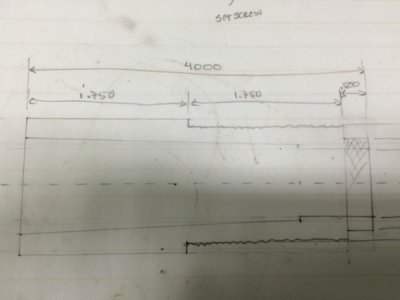
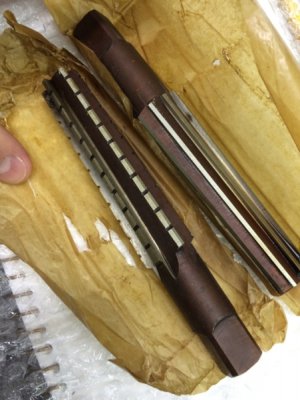
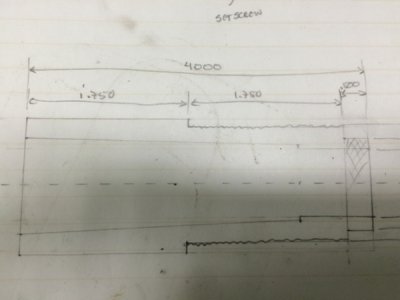
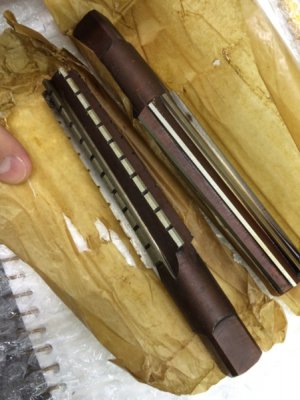
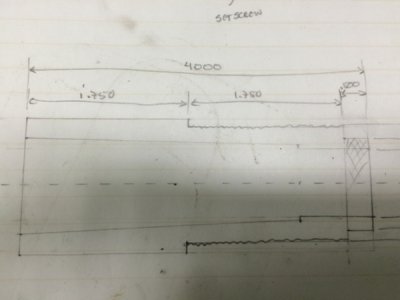
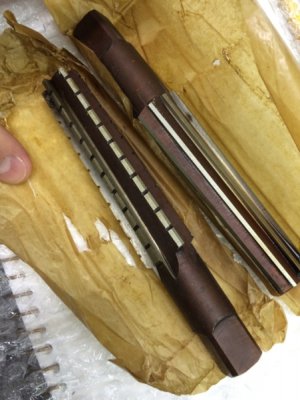
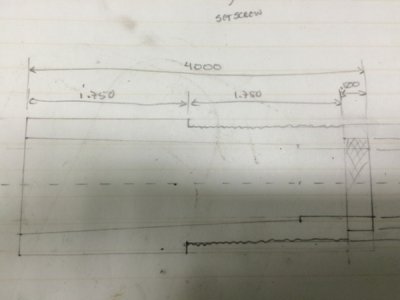
I have piece of O1 drill rod that I need to cut an MT3 "socket" into. I have a set of roughing and finishing MT3 reamers (cheap set from ebay):

The drill rod is basically 1.5"diameter 4 inches long. I need the MT3 socket on-center - here is a rough sketch of what I'm trying to do:

So... how should I go about prepping the part for using the reamers on it?
I'm thinking mount it in a 4-jaw chuck on my lathe (G0602), indicate the rod to be sure it's centered up good. Center-drill, then step drill up to approx 3/4" drill, then bore out to about .800, then start with the roughing reamer, finish with finish reamer... The small-end of the reamers is just under .800 dia, the large end is about .950. Would that be asking too much of the roughing reamer?
The only other option I can see would be to approximate the MT3 taper (undersized obviously) using a boring bar and the compound. I don't think I have 4" of travel on my compound though, but since it doesn't need to be perfect I may be able to do it in two passes? This would seem to require less metal removal by the roughing reamer - but I'm concerned it may also not allow the reamer to "find its center" as well and maybe I'll end up with socket that isn't straight and centered in my part?
Looking for suggestions - thanks in advance!












 )
)